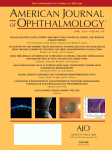In questo studio 113 soggetti con sintomi di distacco posteriore del vitreo (PVD) sono stati studiati mediante OCT spettral domain.
L’esame ha consentito di valutare con molta precisione i rapporti tra la superficie retinica e la corticale vitreale, evidenziando i distacchi parziali e la persistenza di rapporti patologici, quali la formazione di sacche precorticali, trazioni vitreoretiniche, fori lamellari paravascolari e sottili alterazioni foveali.
In tutti gli occhi esaminati lo studio con SD-OCT/SLO ha permesso di migliorare la visualizzazione dei rapporti vitreo retinici.
Lo studio conferma che questa preziosa tecnologia consente di ottenere in vivo delle informazioni estremamente dettagliate della struttura vitreale fisiologica e patologica.
Francesca Mojana, Igor Kozak, Stephen F. Oster, Lingyun Cheng, Dirk-Uwe G. Bartsch, Manpreet Brar, Ritchie M. Yuson, William R. Freeman
Am J Ophth
2010 Apr;149(4):641-50.
Purpose To determine the ability to detect normal vitreous structure, evolving posterior vitreous detachment (PVD), and related vitreoretinal changes with combined spectral-domain optical coherence tomography (SD-OCT) and scanning laser ophthalmoscopy (SLO).
Design Observational cross-sectional study.
Methods Simultaneous SD-OCT and SLO imaging instruments (SD-OCT/SLO) were used to image both eyes of patients with symptoms of PVD. The vitreous cortex, preretinal lacunae, hyaloid, and its relations to the retinal surface were analyzed. In addition, ultrasound was performed in a subset of patients to determine the stage of PVD.
Results Two-hundred two eyes of 113 subjects were scanned. There was a high correlation between diagnosis of complete PVD by clinical examination and OCT (95 vs 93 eyes, respectively; κ, 0.82). A partial PVD was detected more frequently by SD-OCT/SLO than by biomicroscopy examination (45 vs 7 eyes; P < .0001). Ultrasound was performed in a subset of 30 eyes. A high agreement was found between ultrasound and SD-OCT/SLO results for both complete PVD (κ, 0.933) and incomplete PVD (κ, 0.91). Vitreous cortex was detected in 181 eyes, and posterior precortical vitreous pocket was detected in 85 eyes. The effects of PVD, including vitreoretinal traction, paravascular lamellar holes, and fine changes at the fovea, could be visualized reliably in detail only with SD-OCT/SLO. In all these eyes, SD-OCT/SLO allowed improved visualization of the vitreoretinal relationship.
Conclusions SD-OCT/SLO provides unprecedented in vivo information about the physiologic and pathologic vitreous structure; it allows an extremely detailed analysis of the vitreoretinal interface, and it is particularly useful for defining focal changes and PVD.br clear=all”

 Observations by Spectral-Domain Optical Coherence Tomography Combined with Simultaneous Scanning Laser Ophthalmoscopy: Imaging of the Vitreous
Observations by Spectral-Domain Optical Coherence Tomography Combined with Simultaneous Scanning Laser Ophthalmoscopy: Imaging of the Vitreous